In today’s dynamic production environment, keeping ahead of demand while reducing waste is a never-ending challenge. To maintain efficient operations, businesses must balance inventory levels, production schedules, and raw supplies. Software for Material Requirements Planning (MRP) may be useful.
MRP software aims to optimize manufacturing processes by accurately forecasting material requirements, optimizing production schedules, and reducing extra inventory. An effective MRP system may increase productivity, reduce expenses, and boost efficiency, whether you’re managing a major production facility or a small workshop.
Sumisid tayo. This article will discuss MRP software recommendations and how to pick the best option for your company.
Key Takeaways
|
Table of Contents

What is MRP Software?
So, what is MRP? MRP (Material Requirements Planning) is a digital tool that assists companies in managing procurement, manufacturing schedules, and inventories. Monitoring raw materials, forecasting demand, and creating purchase and work orders automate the MRP process and guarantee efficient production operations.
MRP software helps manufacturers and distributors plan and organize production activities, handle purchases and client orders, optimize shop floors, book inventory into work orders, and more. MRP software is not limited to intricate industrial configurations.
Many modern options are adaptable and scalable to accommodate various requirements. Manufacturing software can be very helpful for companies that add value to a product or item, from repackaging or bundling to building complex machinery.
Importance of MRP Software

Modern manufacturing relies heavily on MRP (Material Requirements Planning) software, which helps business operations by facilitating effective procurement, optimizing inventory management, and streamlining production.
MRP software is crucial because it helps reduce inventory costs, improve production efficiency, enhance supply chain management, increase customer satisfaction, support decision-making with real-time data, and integrate ERP MRP software for end-to-end business management.
MRP software is essential for factories to streamline processes, cut expenses, and enhance output. Companies risk ineffective inventory control, production delays, and inefficiencies without it.
ERP vs. MRP Systems
Enterprise resource planning systems, or ERPs, are comprehensive software programs that integrate the whole company into a unified digital ecosystem. The following table compares the differences between ERP vs MRP software:
| Feature | MRP | ERP |
| Scope | Mostly utilized for production scheduling and material planning in manufacturing. | Covers a variety of corporate operations, including supply chain, sales, finance, and human resources. |
| Primary Function | Ensures that production-related items are available while maximizing inventory. | Controls all aspects of company operations, such as customer service, procurement, finance, and human resources. |
| User | Primarily manufacturing companies. | Used by companies in various sectors, including logistics, healthcare, and retail. |
| Cost | Usually lower since it emphasizes inventory and production control. | Higher as a result of the complexity and larger functionality. |
| Modules | Bill of Materials (BOM), Inventory Management, Production Scheduling, Procurement, Demand Forecasting. | MRP, Finance, Accounting, HR, Sales, Customer Relationship Management (CRM), and more. |
However, many Materials Requirement Planning software companies advertise themselves as manufacturers of ERP systems. Our price scheme below provides more information on which systems would be ideal for your business operation.
8 Best MRP Software in the Philippines
Businesses can improve customer connections by selecting the appropriate MRP software. The top 8 MRP solutions in the Philippines are as follows:
1. HashMicro

HashMicro ERP Software, which includes MRP software, is a flexible web-based solution for companies in various sectors, such as manufacturing, consultancy, real estate, and more. It makes things easier and guarantees client data is always correct and available.
Wanna see how HashMicro improve your business efficiency? subukan ang free demo upang makita kung paano nito mapapahusay ang iyong mga proseso ng negosyo at kasiyahan ng customer.
HashMicro’s seamless integration with other crucial business elements, such as inventory, accounting, and procurement, makes it unique. You can swiftly optimize your company’s end-to-end processes with some of the features and pros-cons listed below:
Key features:
- Kiosk Mode: This feature helps the company oversee the latest updates on each work order from each work centre.
- Manufacturing production scheduling: HashMicro software allows companies to plan production schedules based on demand forecasts based on demand history.
- Forecasting based on demand history: Forecast sales and compare them with actual results, examining market trends and historical data.
- Secret recipe / BoM: Create secret recipes and set them so users can access or create secret BoMs to maintain the confidentiality of certain product formulations or production processes and ensure that authorised parties only access sensitive information.
- Manufacturing requisition planning: Ensures the availability of raw materials and necessary resources, optimizes production processes with better planning, and reduces the risk of raw material shortages and production disruptions.
- Made-to-order completion forecast: A feature to predict the completion time of orders created based on orders from Sales Orders, using historical data and real-time information from the production process.
| Pros | Cons |
|---|---|
|
|
2. Odoo

A cloud-based ERP solution with a highly modular design, Odoo is a flexible option for manufacturers who need more flexibility in their business administration. With a vast array of modules and an open-source design that permits considerable modification, Odoo helps businesses adapt the system to various operational needs.
Key features:
- Production planning & scheduling
- Work order & routing management
- Quality control & maintenance
- Integration with other Odoo modules
| Pros | Cons |
|---|---|
|
|
3. Katana cloud inventory

Katana is a cloud-based production and inventory management platform that offers simple and necessary features for manufacturing workflows and smaller stocks. It is a traceability and stock management system that helps businesses with less complex production setups maintain production schedules and workflows.
Key features:
- Sales & order management
- Purchase & supplier management
- Seamless integrations
- Smart manufacturing & production planning
| Pros | Cons |
|---|---|
|
|
4. JobBoss²

A manufacturing system called JobBoss² is devoted to job shops and shop administration. For medium-sized companies dealing with specialized workflows or short-run assignments, JobBoss² is an excellent choice because of its capabilities that simplify scheduling, quoting, and enhanced shop floor control.
Key features:
- Job tracking & Scheduling
- Inventory & material management
- Quoting & estimating
- Integration with accounting & ERP
| Pros | Cons |
|---|---|
|
|
5. Rootstock

Rootstock is a cloud-based MRP system for supply chain companies, manufacturers, and distributors. Constructed on the Salesforce platform, it suits manufacturers needing a more customer-focused approach because it extensively interacts with Salesforce’s CRM and business operations.
Key features:
- Demand-driven material planning
- Work order & production management
- Inventory & warehouse management
- Integration with Salesforce CRM
| Pros | Cons |
|---|---|
|
|
6. MRPeasy

MRPeasy is a robust cloud-based MRP/ERP system made especially for small and expanding businesses. It combines three qualities that small companies love most: scalability, convenience of use, and a superb price-to-performance ratio. It also offers strong manufacturing planning and inventory management features.
Key features:
- Inventory & material management
- Work order & job tracking
- Quality control & compliance
- Seamless Integrations
| Pros | Cons |
|---|---|
|
|
7. SAP Business One

SAP Business One is a good option for businesses that wish to trade the ease of cloud computing for the added security of on-premise software. Because of its on-premise deployment option, Business One is a solid alternative for organizations that value data protection and control, even though it also offers a cloud-based service.
Key features:
- Procurement & supplier management
- Reporting & business analytics
- Sales & customer order integration
- Bill of Materials (BOM) & production management
| Pros | Cons |
|---|---|
|
|
8. SYSPRO

With an emphasis on engineer-to-order processes, SYSPRO is a complete solution that supports a variety of production scenarios. Because of its adaptable and modular interface, SYSPRO is ideal for custom manufacturing since it offers sophisticated scheduling, comprehensive costing features, and good project and quality management tools.
Key features:
- Work order & job costing
- Sales & customer order management
- Reporting & Business Intelligence (BI)
- Financial & cost management
| Pros | Cons |
|---|---|
|
|
What to Look for in an MRP System
To experience the benefits of manufacturing software, ensuring that an MRP (Material Requirements Planning) system satisfies your production and inventory management requirements is essential. The primary attributes and factors listed below could help you make the decision:
- Integration with other systems: The MRP system should easily integrate with supply chain management, accounting, CRM, and ERP (enterprise resource planning) systems, guaranteeing seamless data transfer across departments.
- Production planning and scheduling: Optimizes production processes through staff, machine, and job scheduling and guarantees no delays or resource conflicts during manufacturing.
- Procurement and supplier management: This department assures timely raw material acquisition, tracks supplier performance, and automates purchase orders. It also helps cut lead times and negotiate better prices with suppliers.
- Scalability and flexibility: The system should accommodate growing business needs. As production grows, look for cloud-based solutions and modular extensions that enable adding new features.
- Cost & Return on Investment (ROI): Examine up-front expenditures, license fees, and maintenance charges. The system should provide long-term benefits through waste reduction, increased productivity, and operational simplification.
Conclusion
Businesses in the Philippines might significantly benefit from selecting the appropriate retail MRP software. Choosing one that meets your requirements and helps in client management, sales growth, and efficiency enhancement is crucial
HashMicro’s ERP software is a great option for people searching for a proven solution. It is the perfect solution for resolving sales issues and improving general business operations because of its strong features, smooth integration, and user-friendly layout.
Ang iyong solusyon ay nasa harap mo, get your free demo now and see how it can easily transform your business!

FAQ about MRP Software
-
What is MRP software?
MRP stands for Material Requirements Planning and is a software solution that helps manufacturers calculate more precisely what materials they require, at what time, and in what quantities.
-
Why is MRP used?
MRP is a system designed to plan manufacturing production. It identifies necessary materials, estimates quantities, determines when materials will be required to meet the production schedule, and manages delivery timing—with the goal of meeting demands and improving overall productivity.
-
Is MRP and ERP the same?
MRP helps ensure the right materials are available where and when it’s needed in the production process. ERP has a much broader scope and is an extension of MRP, it also includes functionality to support other areas such as supply chain, procurement, finance etc.






